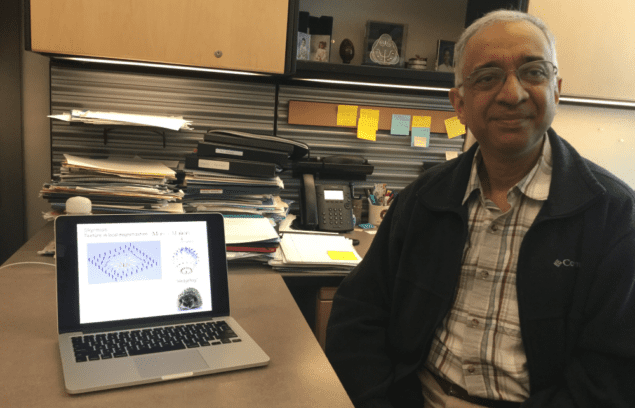
Greetings from Columbus, Ohio, where I will soon be at the April Meeting of the American Physical Society – one of the largest conferences devoted to particle physics, with some astrophysics and cosmology thrown in too.
But before I delved into colliders, detectors and what lies beyond the Standard Model, I paid a visit to the nearby Ohio State University (OSU) where I met with the Mohit Randeria. He is a condensed matter theorist who has worked on a wide range of problems – cutting his teeth on high-temperature superconductors and doing calculations on ultracold atoms.
Over the past four years, Randeria has added skyrmions to his list of interests. Originally an idea from the world of particle physics (there is a connection to the April Meeting!), skyrmions also appear as collective quasiparticle states in some magnetic materials. They are topologically protected from external influences, which means that they could be used to store bits of data in very stable computer memories. Randeria explained to me that if certain technical challenges could be overcome, such memories could be denser and more energy efficient that current technologies.
Randeria has put together a crack team of physicists and engineers at OSU to create and study skyrmion materials. The team is based at OSU’s Center for Emergent Materials (CEM) and has recently been granted more than $6m from Defense Advanced Research Projects Agency (DARPA) to further its studies of skyrmions.
I recorded a conversation with Randeria, which you can listen to below.
Now, it’s time for some particle physics.



